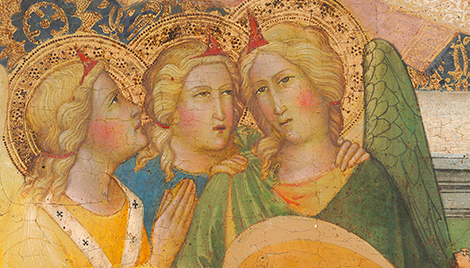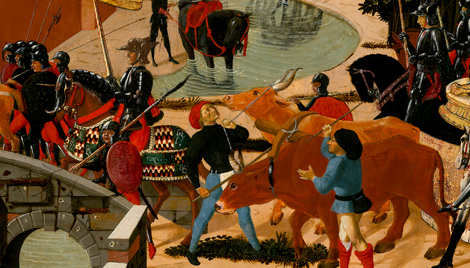The Conversion of Saint Paul
The Conversion of Saint Paul
- Artist
- Jacopo Tintoretto
- Artist Dates
- 1518/1519-1594
- Artist Nationality
- Italian
- Title
- The Conversion of Saint Paul
- Date
- c. 1544
- Medium
- oil on canvas
- Dimensions
- 152.7 × 236.3 cm (60 1/8 × 93 1/16 in)
- K Number
- K2064
- Repository
- National Gallery of Art
- Accession Number
- 1961.9.43
- Notes
Provenance
Probably Palazzo Pisani a Santo Stefano until c. 1809. [1] George William Fox, 9th baron Kinnaird [1807-1878], Rossie Priory, Perthshire, Scotland, by 1857. [2] Count Alessandro Contini-Bonacossi [1878-1955], Florence, by 1939; [3] sold June 1954 to the Samuel H. Kress Foundation, New York; [4] gift 1961 to NGA. [1] As proposed by Lino Moretti, “I Pisani di Santo Stefano e le opere d’arte del loro palazzo,” in _Il Conservatorio di musica Benedetto Marcello a Venezia: 1876–1976: Centenario della fondazione_, edited by Pietro Verardo, Venice, 1977: 170. The 1809 inventory by Pietro Edwards of the painting gallery of the Palazzo Pisani a Santo Stefano lists a _Conversion of Saint Paul_ attributed to Andrea Schiavone, measuring 157 x 235 cm. Tintoretto’s early paintings have often been attributed to Schiavone. In addition, the collection included one other major early painting by Tintoretto (the _Visit of Solomon and the Queen of Sheba_, now Château, Chenonceaux) as well as a _Crucifixion_ from Tintoretto’s studio in the mid-1550s (now Museo Civico, Padua). The origin of the paintings in the Pisani galleria, a large majority of which date from the Cinquecento, is unknown. The palace itself dates from the first two decades of the 17th century. In 1679 Almorò Pisani (1615-1682) bound the paintings along with the palazzo and the rest of its contents to pass by inheritance without division according to male primogeniture. In the late 18th century, the palace was restored and decorated by Almorò Alvise Pisani (1754-1808) after his marriage to Giustiniana Pisani di Santa Maria del Giglio, who brought as her dowry the possessions of that line, which was extinguished with her. Almorò Alvise and his brother Almorò Francesco (1759-1836) fell into debt and in 1781 divided up all the family property not bound by the trust. They were forced to sell their villa on the terra ferma to Napoleon in 1807. In 1809, after Almorò Alvise’s death, his son, also named Almorò Francesco, and Almorò Francesco (the brother of Almorò Alvise) divided up the remaining undivided assets, the trust having been invalidated by Napoleonic law. The inventory was prepared at this time. The paintings were sold and dispersed, along with many of the other treasures of the palace, much of which was also sold off over the following decades. See Moretti 1977, 138-139, 166, 170. The fact that the Pisani galleria contained at least two early paintings by Tintoretto, along with one from the mid-1550s, raises the possibility that these three pictures were originally purchased by the same early patron of Tintoretto, either a member of the Pisani family or someone from whom the Pisani eventually acquired them. However, no link can be established between the Pisani painting and the first documented appearance of the NGA’s painting in the Kinnaird collection in 1857. [2] Gustav Friedrich Waagen, _Galleries and Cabinets of Art in Great Britain: Being an Account of more than Forty Collections of Paintings, Drawings, Sculptures, Mss., &c.&c._, London, 1857: 448. [3] Published by William Suida, “Zwei unbekannte Werke Tintorettos,” _Pantheon_ 23 (1939): 122, as in the Contini-Bonacossi collection. [4] On 7 June 1954 the Kress Foundation made an offer to Contini-Bonacossi for sixteen paintings, including the NGA painting. In a draft of one of the documents prepared for the Count's signature in connection with the offer this painting is described as one "which came from my personal collection in Florence." The Count accepted the offer on 30 June 1954; the final payment for the purchase was ultimately made in early 1957, after the Count's death in 1955. (See copies of correspondence in NGA curatorial files.)






